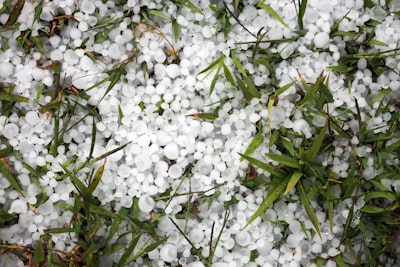Weather systems are often volatile, and severe storms can pop up unexpectedly. They can also prove much more intense, even though they don’t last long. One of the common phenomena that might accompany a storm is hail. When it comes to your house and property, that hail might prove very damaging. However, your homeowners insurance might be able to help you cover the costs of repairs. Still, coverage might apply only in certain circumstances. So, if you need to make a claim for hail damage, do your due diligence in reporting and documenting the claim.
Hail Coverage Under Homeowners Insurance 
Weather damage is often unexpected and unpreventable, hail included. Hail can develop quickly and with little warning. It also is hard to predict both the size of the hail and the scope and duration of the storm. Therefore, many homeowners insurance policies will offer coverage for hail damage. They do so because of the severe damage hail might do to:
- Your roof
- The home’s structure and siding
- Window glass
- Driveways, walkways and outdoor furnishings
- Storage buildings and fencing
- Possessions inside the house that get damaged because of hail penetrating the home
To address these damages, most homeowners policies offer damage coverage for:
- Primary structures
- Other/detached structures
- Personal possessions
However, the catch is that most policies won't provide unlimited coverage against hail. Therefore, check your policy’s terms and conditions for any limitations.
When Hail Might Not Have Coverage
If you worry about whether you home has coverage for hail, the place to look is on your homeowners policy. Check your insurance to see where limitations might apply to the damage:
- All policies will pay a maximum dollar amount for claims. They usually pay the replacement cost value for structure damage and the cash value of possessions at the time of the loss.
- Some policies explicitly list the hazards they will cover. If hail is not listed, then it will not have coverage.
- Some items, like shrubbery and landscaping, might have no coverage at all from hail. Foliage faces weather exposure all the time, so insurers likely exclude these items.
- Policies will include deductibles. The insurer will subtract the cost of the deductible from your claim value.
- Most policies require claimants to report hail damage within a certain time frame. You might have only 90 days to report the damage, and afterwards you won’t be able to do so.
In the lead-up to certain natural disasters, your insurer might freeze changes to policies. So, if you don’t have hail insurance, don’t wait until you think a storm system is coming to upgrade your policy. Instead, do so as soon as possible. This will help your insurer process all necessary changes before a claim can arise.